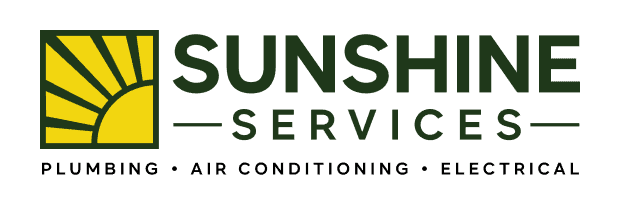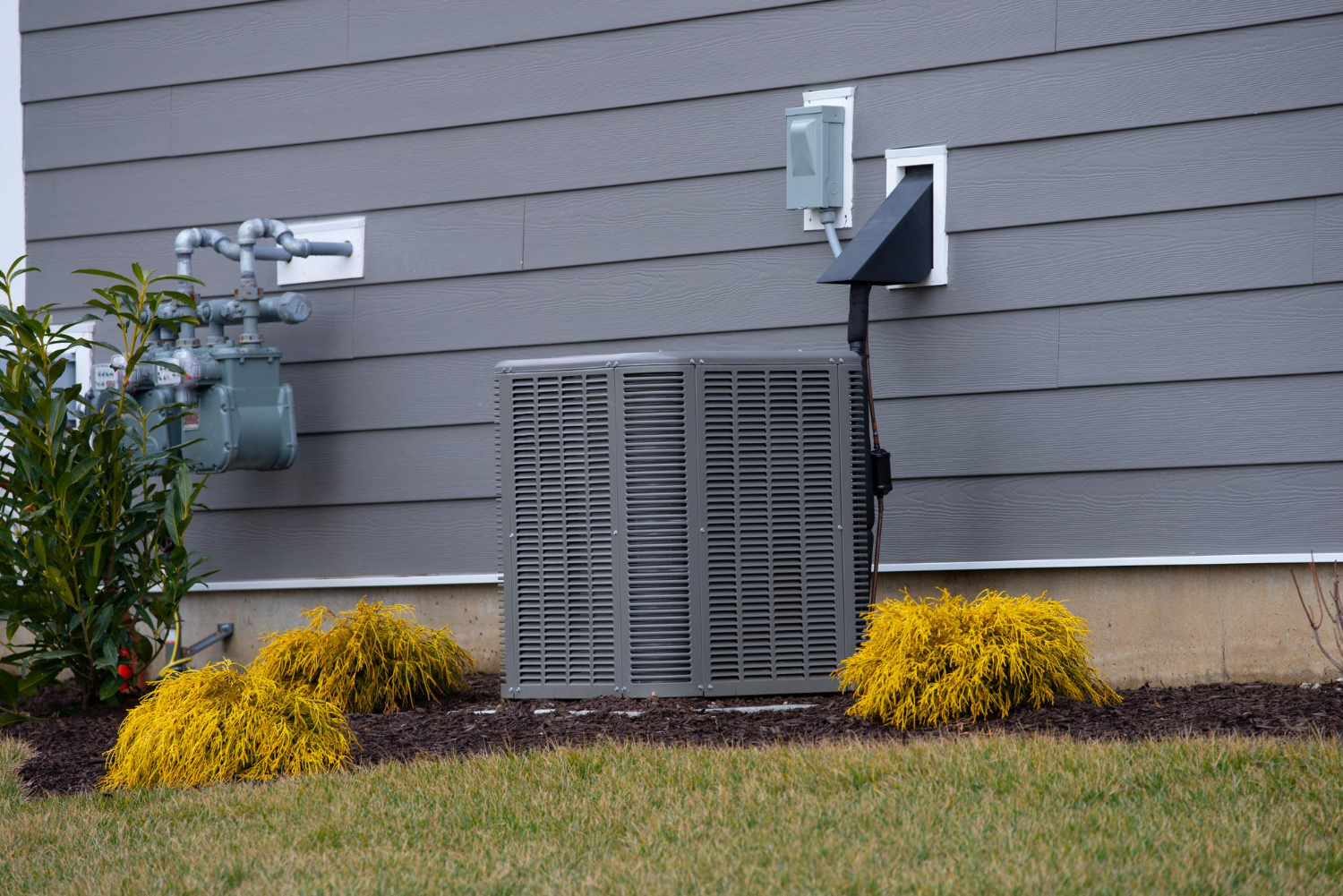


FREE Water Heater
With every whole house repipe purchase. Free brand-new water heater or credit towards a tankless water heater.
.svg)
.svg)
.svg)
.svg)



With every whole house repipe purchase. Free brand-new water heater or credit towards a tankless water heater.
.svg)
.svg)
.svg)
.svg)

A green cooling system uses energy-efficient technologies and eco-friendly refrigerants to cool homes while reducing environmental impact. These systems include options like geothermal heat pumps, solar-powered air conditioning, and advanced units that separate dehumidification from cooling.
By switching to a high‑efficiency or green cooling system, homeowners can reduce air conditioning energy use by 20‑50 percent, according to the U.S. Department of Energy.
The shift toward sustainable cooling has become essential as energy costs rise and climate concerns grow. Traditional air conditioners consume large amounts of electricity and often use refrigerants that harm the environment. Green alternatives address these problems by using renewable energy sources, improved efficiency ratings, and environmentally safe cooling agents.
Homeowners now have more green cooling choices than ever before. From geothermal systems that tap into the earth's stable underground temperatures to solar-powered units and district cooling networks, these technologies offer practical solutions for different budgets and home types.
In this article, you’ll learn how to choose a green cooling system, compare eco-friendly AC options, and calculate savings using the $5000 HVAC rule.
Let’s break down the key points you should consider.
Keep reading! Understanding the costs, benefits, and installation requirements helps property owners make informed decisions about upgrading their cooling systems.
Green cooling systems use less energy than traditional air conditioners while creating a more comfortable indoor environment. These systems feature advanced technologies like inverter controls and eco-friendly refrigerants that reduce both utility bills and environmental impact.
Modern eco-friendly AC units consume 30-50% less electricity than older models through improved compressor technology and better insulation. Heat pumps represent one of the most efficient options since they transfer heat rather than generate it from scratch.
Energy Star certified units meet strict efficiency standards set by the EPA. These systems often include programmable thermostats that learn household patterns and adjust temperatures automatically.
Noise reduction features make these systems much quieter than traditional units. Variable speed fans run at lower speeds most of the time, creating less sound. Better insulation around the compressor also dampens operational noise.
Geothermal systems tap into stable underground temperatures to cool homes with minimal energy input. While installation costs more upfront, these systems can reduce cooling costs by 65% compared to conventional air conditioning.
Solar-powered cooling systems use panels to generate electricity for AC units during peak sun hours when cooling demand is highest.
Inverter technology allows AC compressors to adjust their speed based on cooling needs rather than turning on and off repeatedly. This creates more consistent indoor temperatures without the temperature swings of traditional systems.
Variable speed motors run at different speeds throughout the day. When less cooling is needed, the system runs slower and uses less energy. When temperatures rise, it speeds up to maintain comfort.
Benefits of variable speed operation:
These systems reach the desired temperature faster and maintain it more precisely. Homeowners experience fewer temperature fluctuations and improved air quality since the system runs longer at lower speeds, providing better air filtration.
Traditional refrigerants like R-22 deplete the ozone layer and contribute to global warming. Newer refrigerants such as R-410A and R-32 have zero ozone depletion potential and lower global warming potential.
Environmental impact comparison:
Refrigerant
Ozone Depletion
Global Warming Potential
R-22 (old)
High
1,810
R-410A
Zero
2,088
R-32
Zero
675
R-32 refrigerant is becoming the preferred choice for new systems. It requires 30% less refrigerant to achieve the same cooling capacity and breaks down faster in the atmosphere.
Natural refrigerants like CO2 and ammonia are gaining popularity in commercial applications. These substances have minimal environmental impact but require specialized equipment and installation.
Proper refrigerant handling during installation and maintenance prevents leaks that harm the environment. Certified technicians use recovery equipment to capture and recycle old refrigerants rather than releasing them into the air.
Heat pumps work well in most areas and cost less than other green options. Geothermal systems save the most money over time but need a big upfront investment. Evaporative coolers only work in dry climates and have clear limits.
Heat pumps move heat instead of making it. This makes them use 50% less energy than regular heating systems. They work as both heater and air conditioner in one unit.
Modern heat pumps work well even when temperatures drop below freezing. Cold climate models can heat homes when outside temps reach -15°F. They cost $4,000 to $8,000 installed.
Air source heat pumps pull heat from outside air. They fit most homes and don't need special setup. Ground space requirements are minimal.
Mini-split systems cool specific rooms without ducts. They work great for older homes or room additions. Each indoor unit connects to one outdoor unit.
Heat pumps last 15 to 20 years with basic care. They need less repair work than gas furnaces. Most models qualify for tax credits and utility rebates.
These systems work best in mild to moderate climates. Very hot or very cold areas may need backup heating or cooling.
Geothermal systems use ground temperature to heat and cool homes. Underground temps stay around 50-55°F year-round. This makes heating and cooling much more efficient.
The U.S. Department of Energy states that geothermal heat pumps can reduce energy use by 30% to 60%, making them one of the most efficient green HVAC options. They last 20-25 years for indoor parts and 50+ years for ground loops. Operating costs stay low for decades.
Ground loop types:
Installation costs $15,000 to $30,000 for most homes. The high upfront cost pays back through energy savings over 5-10 years.
Geothermal systems run very quietly. No outdoor condenser means no noise for neighbors. They also provide hot water heating as a bonus feature.
These systems work in all climates and weather conditions. Ground temperature stays constant regardless of outside air temperature.
Evaporative coolers add moisture to air while cooling it down. They work by blowing air over wet pads. This process cools air by 15-30 degrees.
These systems use 75% less electricity than regular air conditioners. They cost $800 to $3,000 installed. Operating costs stay very low all summer.
Requirements for good performance:
Evaporative cooling stops working when humidity gets too high. Rainy days or humid weather makes them ineffective. They also add moisture to indoor air.
Maintenance needs are higher than other systems. Water pads need regular cleaning and replacement. Mineral buildup requires monthly attention.
These coolers work best in southwestern states like Arizona, Nevada, and parts of California. They don't work well in humid regions like the Southeast or coastal areas.
Green cooling systems require higher upfront costs but deliver long-term savings through lower energy bills. Understanding repair versus replacement decisions and available financial incentives helps homeowners make smart investment choices.
Green cooling systems cost 20-40% more than standard units upfront. High-efficiency models use advanced compressors, variable-speed motors, and better heat exchangers.
Energy Star certified units can reduce cooling costs by 15-20% annually. A home spending $200 monthly on cooling could save $30-40 each month with an efficient system.
Key price factors include:
Monthly savings depend on home size, local climate, and electricity rates. Homes in hot climates see faster payback periods than moderate temperature areas.
Most green cooling systems pay for themselves within 5-8 years through energy savings. The higher the local electricity rates, the shorter the payback period becomes.
The $5000 rule helps homeowners decide between repairing or replacing their cooling system. The formula multiplies system age by repair cost.
Formula: System age (years) × Repair cost ($) = Total
If the total exceeds $5000, replacement often makes better financial sense than continued repairs.
Example calculations:
Systems over 10 years old with repair costs above $500 typically warrant replacement. Older units lack modern efficiency features and face more frequent breakdowns.
The rule considers that repair costs often repeat within 2-3 years on aging systems. Replacing with green technology provides reliability and energy savings.
Federal tax credits cover 30% of eligible high-efficiency cooling system costs through 2032. The credit applies to systems meeting specific efficiency standards.
Common incentive types:
Many utilities offer peak-time rebates for smart thermostats and demand-response programs. These programs can reduce monthly bills by an additional 10-15%.
Some areas provide low-interest financing for energy-efficient upgrades. These programs spread costs over 5-10 years while savings begin immediately.
Combining multiple incentives can reduce net system costs by $2000-4000. This cuts typical payback periods from 6-8 years down to 3-5 years for most homeowners.
Green cooling systems offer real benefits but come with trade-offs that buyers should understand. Each type has specific limitations that affect performance, cost, and practicality in different situations.
Heat pumps rank as the most eco-friendly cooling option available today. They use 50-75% less energy than traditional air conditioners by moving heat instead of creating cold air.
Geothermal heat pumps lead the pack for environmental benefits. They tap into stable underground temperatures to cool homes with minimal electricity use.
District cooling systems also rank high for large buildings. These systems share efficient chillers across multiple buildings through underground pipes. They cut energy use and reduce the need for individual cooling units.
Evaporative coolers work well in dry climates with very low energy use. They cool air through water evaporation rather than energy-intensive refrigeration cycles.
Key environmental factors:
The greenest choice depends on location, building type, and local energy sources.
Evaporative coolers only work well in dry climates with low humidity. They add moisture to the air, which creates problems in humid areas.
Main limitations:
Planning solutions:
Check local humidity levels before buying. Areas with humidity above 60% should avoid evaporative cooling.
Budget for water costs and maintenance time. These systems need fresh water daily and filter changes monthly.
Install proper ventilation to prevent moisture buildup. Open windows or vents help humid air escape.
Consider hybrid systems that switch between evaporative and traditional cooling based on weather conditions.
High upfront costs affect most green cooling systems. Heat pumps and solar-powered units cost 2-3 times more than basic air conditioners initially.
Performance gaps occur when systems don't match local conditions. A geothermal system in rocky soil costs much more to install than expected.
Maintenance requirements often exceed traditional systems. Some green technologies need specialized technicians or frequent part replacements.
Avoiding common mistakes:
Get multiple quotes and check local installer experience with the specific system type.
Calculate total costs over 10-15 years, including maintenance, energy savings, and potential repairs.
Verify warranty coverage and local service availability before purchasing.
Research climate compatibility thoroughly. Systems that work well in one region may fail in different conditions.
Check utility rebates and tax credits that reduce initial costs significantly.
Getting the right size system and checking your ducts first helps avoid costly mistakes. Smart controls and regular maintenance keep your green cooling system running at peak efficiency.
Proper system sizing prevents energy waste and comfort problems. A system that's too big cycles on and off too much. A system that's too small runs constantly and can't keep up.
HVAC professionals use load calculations to find the right size. They measure your home's square footage, insulation levels, and window types. They also check ceiling heights and local climate data.
Duct inspection catches hidden problems:
Smart thermostats save 10-15% on cooling costs. They learn your schedule and adjust temperatures automatically. Many models connect to your phone so you can control them remotely.
Zoned systems give you more control over different areas. They use dampers in the ducts to direct air where it's needed most. This prevents overcooling empty rooms.
Regular maintenance prevents small problems from becoming expensive repairs. Clean systems use less energy and last longer than neglected ones.
Monthly tasks homeowners can do:
Professional tune-ups should happen twice per year. Technicians clean coils, check refrigerant levels, and test all components. They also calibrate thermostats and tighten electrical connections.
Dirty coils make your system work harder. Clean coils transfer heat better and improve efficiency by up to 30%. Refrigerant leaks reduce cooling power and can damage the compressor.
Filter replacement is the most important maintenance task. Clogged filters restrict airflow and make the system run longer. High-quality filters also improve indoor air quality.
Professional contractors provide detailed estimates that break down all costs. They explain equipment options, installation requirements, and potential challenges upfront.
Good contractors visit your home to assess the current system. They measure rooms, check electrical panels, and inspect existing ductwork. This prevents surprise costs during installation.
What to expect in a quality estimate:
Multiple quotes help you compare value, not just price. The lowest bid might skip important steps or use cheaper materials. The highest bid might include unnecessary upgrades.
Licensed contractors carry insurance and pull proper permits. They follow local codes and manufacturer guidelines. This protects you from liability and ensures the work meets safety standards.
Financing options make upgrades more affordable. Many contractors offer payment plans or help with rebate applications. Energy-efficient systems often qualify for tax credits or utility incentives.
Green cooling systems offer practical solutions for reducing energy use and environmental impact. These technologies help buildings and businesses save money while protecting the planet.
Modern green cooling combines smart technology with natural methods. Systems use sensors, automation, and renewable energy sources to work more efficiently.
The technology keeps improving each year. New designs blend traditional cooling with solar power, natural ventilation, and advanced controls.
Companies and homeowners can choose from many different green cooling solutions. Each building has unique needs that affect which system works best.
The shift toward sustainable cooling is happening now. More people understand the benefits of these systems for their wallets and the environment.
Training programs help technicians learn to install and maintain these systems safely. This support makes green cooling more accessible to everyone.
Green cooling technology represents a smart investment in the future. These systems provide comfort while helping create a cleaner, more sustainable world for everyone.
Request a customized quote today and let Sunshine Services design and install the right green cooling system for your home.